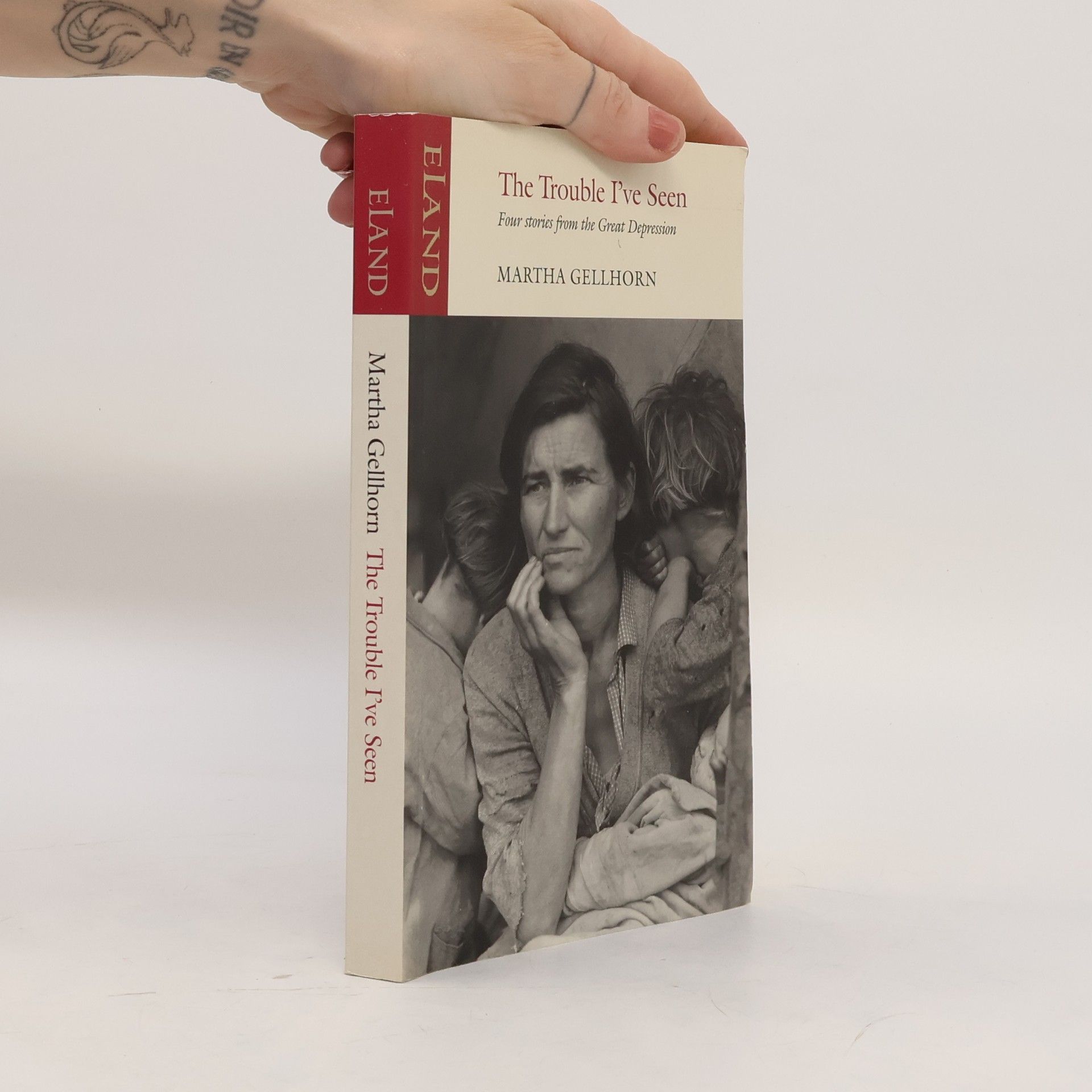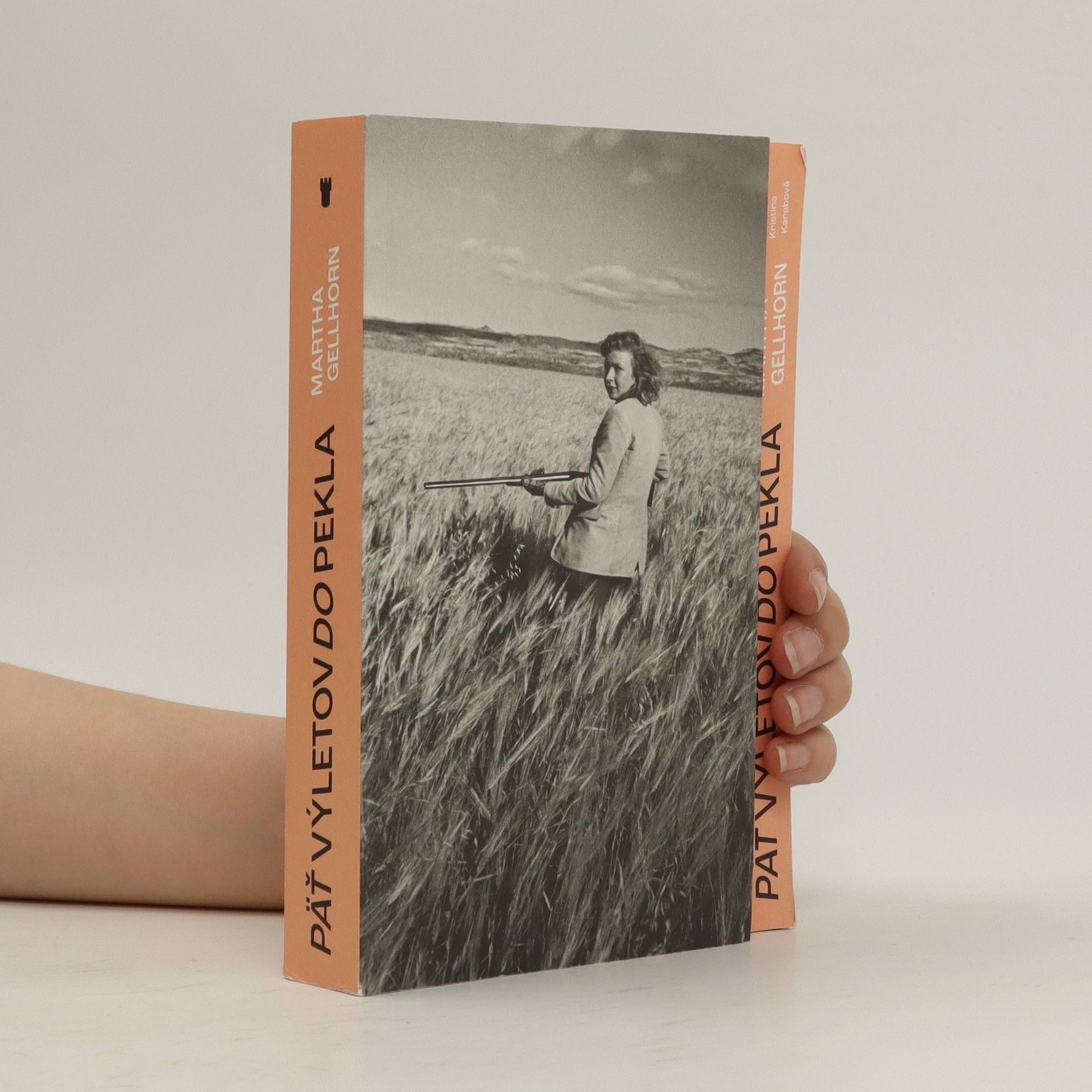Americká spisovateľka, legendárna vojnová reportérka, vášnivá a nespútaná cestovateľka, ktorá sa nebála lietajúcich granátov, milovala nedotknuté pláže a dobrú whisky. Martha Gellhorn (1908–1998) počas svojej novinárskej kariéry nechýbala pri žiadnom veľkom konflikte 20. storočia. Písala o španielskej občianskej vojne, vylodení v Normandii, ako prvá informovala o oslobodení koncentračného tábora Dachau. Nevynechala ani Vietnam, vojny na Blízkom východe či konflikty v Strednej Amerike. V spomienkach sa vracia k najlepším zo svojich najhorších ciest, ktoré aj po rokoch zaujmú vykreslením situácií, miest či charakterov. S ironickým nadhľadom a svojským zmyslom pre spravodlivosť nás pozýva do Moskvy medzi sovietskych disidentov, nedávno dekolonizovanej Afriky, vojnového Karibiku, ale aj na návštevu Čankajšekovej Číny. Či už cestovala sama, alebo ju sprevádzal jej manžel Ernest Hemingway (v knihe ako N. S. – neochotný spoločník), bola mimoriadne otvorenou a výstižnou pozorovateľkou, a hoci ľudí považovala za najškodlivejší druh na planéte, vždy pevne stála na strane slabších a utláčaných.
Martha Gellhorn Knihy
Táto americká autorka je považovaná za jednu z najväčších vojnových spravodajkýň 20. storočia. Jej reportáže sa vyznačujú prenikavým vhľadom do ľudských osudov v kontexte vojnových konfliktov. Svoje skúsenosti a postrehy preniesla aj do beletristickej tvorby, kde sa často zaoberá témami spravodlivosti a ľudskej statočnosti. Jej odkaz žije ďalej aj prostredníctvom prestížneho novinárskeho ocenenia, ktoré nesie jej meno.







Written in the aftermath of World War II, Love Goes to Press opened in London in 1946 and on Broadway in 1947. At the time a relief for the survivors of Blitzkrieg and ration cards, today it is a devilishly entertaining portrayal of the Battle of the Sexes.
Find yourself plunged straight back into Madrid during the Spanish Civil War, feel the frozen ground of the Finno Russian war, the continent-wide Japanese invasion of China, the massacres in Java, the murderously naive intervention in Vietnam and the USA's dirty little wars in Central America.
The Illustrated West With the Night
- 294 stránok
- 11 hodin čítania
The dramatic true story of a remarkable woman growing up in Africa in the 1920s: the excitement of big game hunting and horse training, and the first solo flight across the Atlantic from east to west. It's named one of the ten greatest adventure books of all time, as selected by a panel assembled by National Geographic Adventure. The author describes growing up in an Africa that no longer exists, training and breeding race horses, flying mail to Sudan, and being the first woman to fly the Atlantic from east to west
The Weather in Africa
- 241 stránok
- 9 hodin čítania
Two sisters, one beautiful, one plain, return unmarried from their adventures to their parents' hotel on the mountain, where they are caught up in a scandalous relations with an African official and an English botanist. Meanwhile, a heartbroken woman tries to escape the memory of her son's death on a doomed holiday by the sea.
The Trouble I've Seen
- 266 stránok
- 10 hodin čítania
Martha was the youngest of sixteen, handpicked reporters who filed accurate, confidential reports on the human stories behind the statistics of the Depression directly to Roosevelt's White House.
Ervaringen van een Amerikaanse journaliste in het door de Duitsers bezette Praag in 1938.
The View from the Ground
- 396 stránok
- 14 hodin čítania
If you want to know about writing, about how to make others share the horror and intensity of an experience, try the first piece in this collection, Justice at Night
Martha Gellhorn, die berühmte Kriegsreporterin, schrieb in den sechziger Jahren über das "Palästina-Problem". Sie erkundete die Hintergründe des jüdischen Heimatsbedarfs und berichtete von ihrer Reise durch Deutschland sowie dem Eichmann-Prozess. Gellhorn stellte fest, dass Palästinenserführer Geld für die Ausbildung von Kämpfern verwendeten, anstatt Bildung zu fördern.
Martha Gellhorn ist eine Legende, denn sie berichtete über 60 Jahre hinweg aus Krisen- und Kriegsgebieten für alle möglichen Zeitungen und war ihr Leben lang unterwegs. Sie besuchte sie das republikanische Spanien und Deutschland in Trümmern. Ihre Kriegsreportagen machten sie berühmt. Hier nun versammelt »eine der klügsten und eloquentesten Zeuginnen des 19. Jahrhunderts«, wie Bill Buford sie nannte, Reportagen, die in Friedenszeiten entstanden sind. Reportagen, in denen sie den Zustand und die Psychologie eines Landes zu entschlüsseln sucht.
